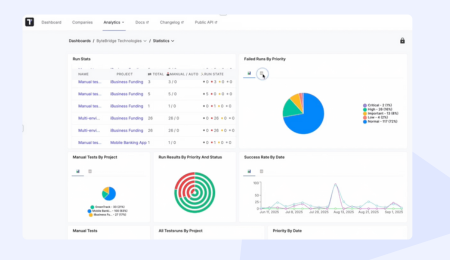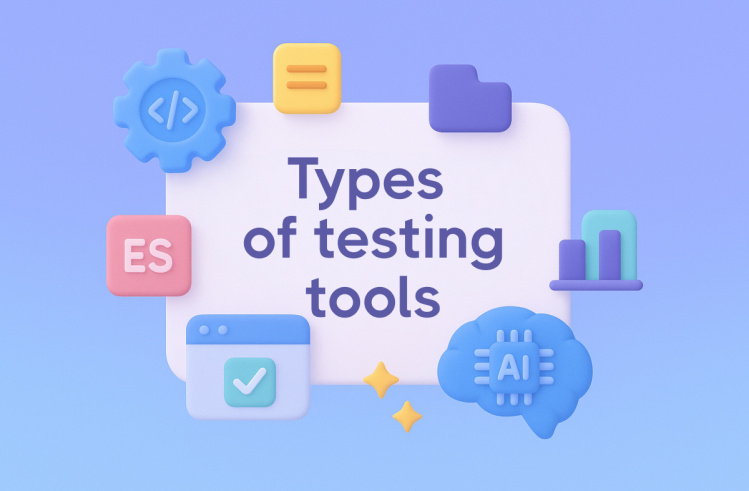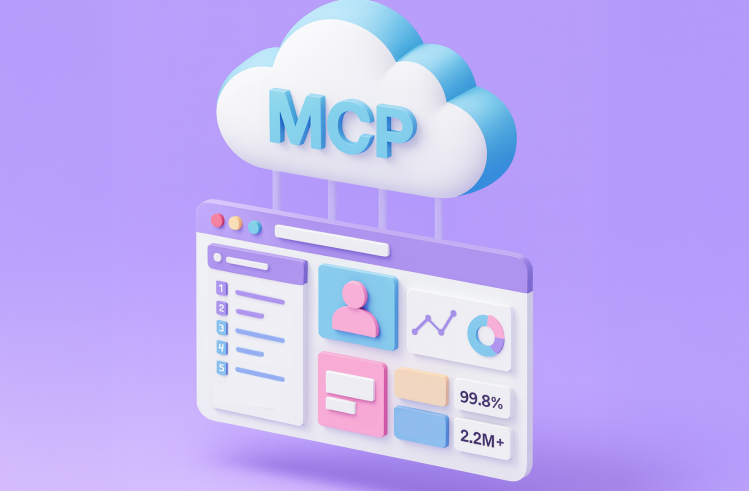Cypress changed how developers think about end-to-end testing. Fast feedback loops, real-time reloads, and a developer-first experience made it a popular choice for modern web testing. But as teams scale, the cracks start showing.
Cross-browser support? Limited. Testing mobile applications or desktop applications? Not happening. Scaling to 100K+ tests? Slow and painful. The testing process becomes fragmented, test creation takes longer, and suddenly your automation tool becomes the bottleneck instead of accelerating your development process.
That’s why teams explore various alternatives. Not because Cypress is bad – it’s not. But because different project requirements demand different testing tools. Testomat.io sits at the top of that list, offering AI-powered test orchestration that adapts to your specific needs – whether you’re managing manual tests, automated test scripts, or both.
What Is Cypress?
Cypress is a JavaScript-based end-to-end browser automation framework built for modern web applications. It runs directly in the Chrome browser (and other Chromium-based browsers), which gives you automatic waiting, real-time reloads, and time-travel debugging. JavaScript developers love it because setup is minimal and the learning curve is smooth.
Typical use cases:
- Component and integration testing for React, Vue, Angular apps
- End-to-end testing of user interactions
- API testing with visual feedback
- Automating web pages for regression testing
Core strengths:
- Fast test execution with no flakiness from Selenium-style delays
- Built-in debugging with screenshots and video recording of test results
- b community support and plugin ecosystem
- Excellent for software testing when browser compatibility isn’t a concern
Where it falls short:
- Limited browser support: Chromium-based browsers only (Firefox and Edge support are experimental)
- Language lock-in: JavaScript/TypeScript only – no support for different programming languages
- Mobile application testing: Not supported
- Parallel testing: Requires paid dashboard or custom setup
- Test management: No native test case design or collaboration features for team members
- Scaling issues: Performance degrades with large test suites
- No cross-platform testing: Can’t test desktop applications or real devices
When your testing requirements grow beyond web-only testing or your team expertise spans multiple programming languages, Cypress alone won’t cut it.
Criteria for Choosing a Cypress Alternative
Here’s what matters when evaluating a testing tool:
- Ease of use and learning curve. Can your team members onboard quickly? Does it match your team expertise?
- Cross-browser and platform support. Can you test on Safari, mobile browsers, desktop applications, or real devices – not just Chrome?
- Integration with CI/CD pipelines and DevOps tools. Do the integration capabilities plug into GitHub Actions, Jenkins, GitLab CI, and sync with Jira or Slack?
- AI-driven features or automation enhancements. Can it automate test creation from requirements, detect flaky tests, or optimize comprehensive testing coverage automatically?
- Test stability and maintainability. Does it reduce false positives? Can non-technical team members understand and manage test cases through the testing process?
- Support for different programming languages. Does it lock you into one language or adapt to your specific requirements?
Top Cypress Alternatives
1. Testomat.io
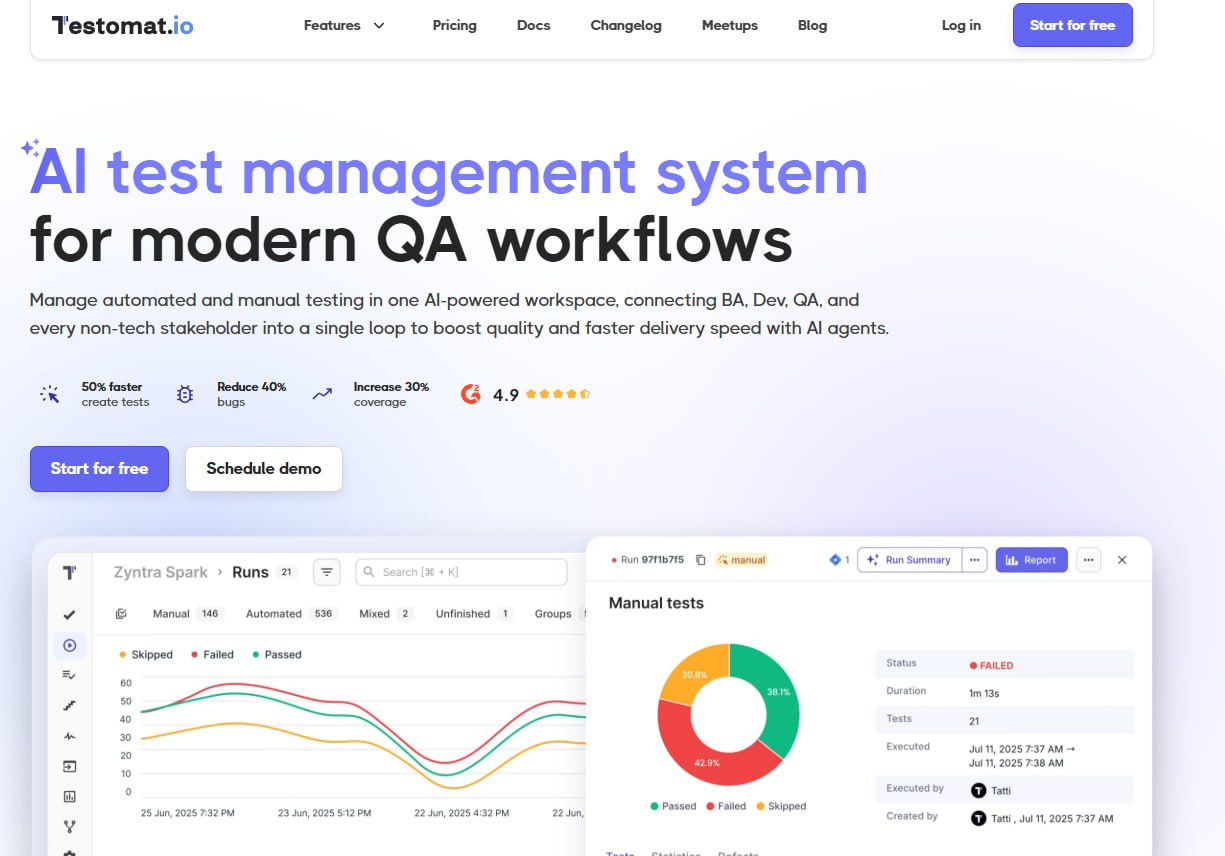
Testomat.io is an AI-powered testing tool that unifies manual and automated testing in one workspace. While Cypress focuses on running test scripts, Testomat.io manages the entire testing process from test creation to analyzing test results.
Why it stands out:
- AI-powered test creation and orchestration. Testomat.io’s AI agents generate test cases from Jira user stories, GitHub issues, or plain text requirements. Your BA writes a user story, and Testomat.io turns it into test-ready scenarios on the fly. This automation tool eliminates manual overhead in the development process.
- Supports both manual and automated tests. Unlike Cypress, which only handles automation, Testomat.io connects all team members – QA, Dev, PM, BA, and Product – into one workflow. Manual testers, automation engineers, and stakeholders all work from the same source of truth.
- Seamless integration capabilities with Jira, CI/CD, and multiple frameworks. Native support for major automation tools (including Cypress, Playwright, WebDriverIO, TestCafe), CI/CD tools (GitHub Actions, Jenkins, GitLab CI), and issue trackers. One command syncs your test results – no custom test scripts needed.
- Cross-platform and comprehensive testing support. Testomat.io orchestrates tests across any browser, platform, or device. It doesn’t lock you into limited browser support like Cypress. Whether you need mobile application testing, desktop applications, or web pages, it handles your testing needs.
- Built for scale with parallel testing. Handles 100K+ tests per project with enterprise-grade stability. Real-time dashboards track test results, trend analytics, and smart reporting eliminate the spreadsheet hell most QA teams live in. Parallel testing runs smoothly without paid add-ons.
- Flake detection and test stability. AI-powered flake detection automatically flags unreliable test scripts, reducing false positives and improving the testing process.
When to choose Testomat.io:
- You need unified test management that matches your specific requirements
- Your team members include non-technical stakeholders who need visibility
- You’re scaling beyond 1K tests and hitting bottlenecks with your current automation tool
- You want AI to accelerate test creation and reduce manual overhead
- Your testing requirements include both manual and automated workflows
- You need comprehensive testing across browsers, platforms, and devices
2. Playwright
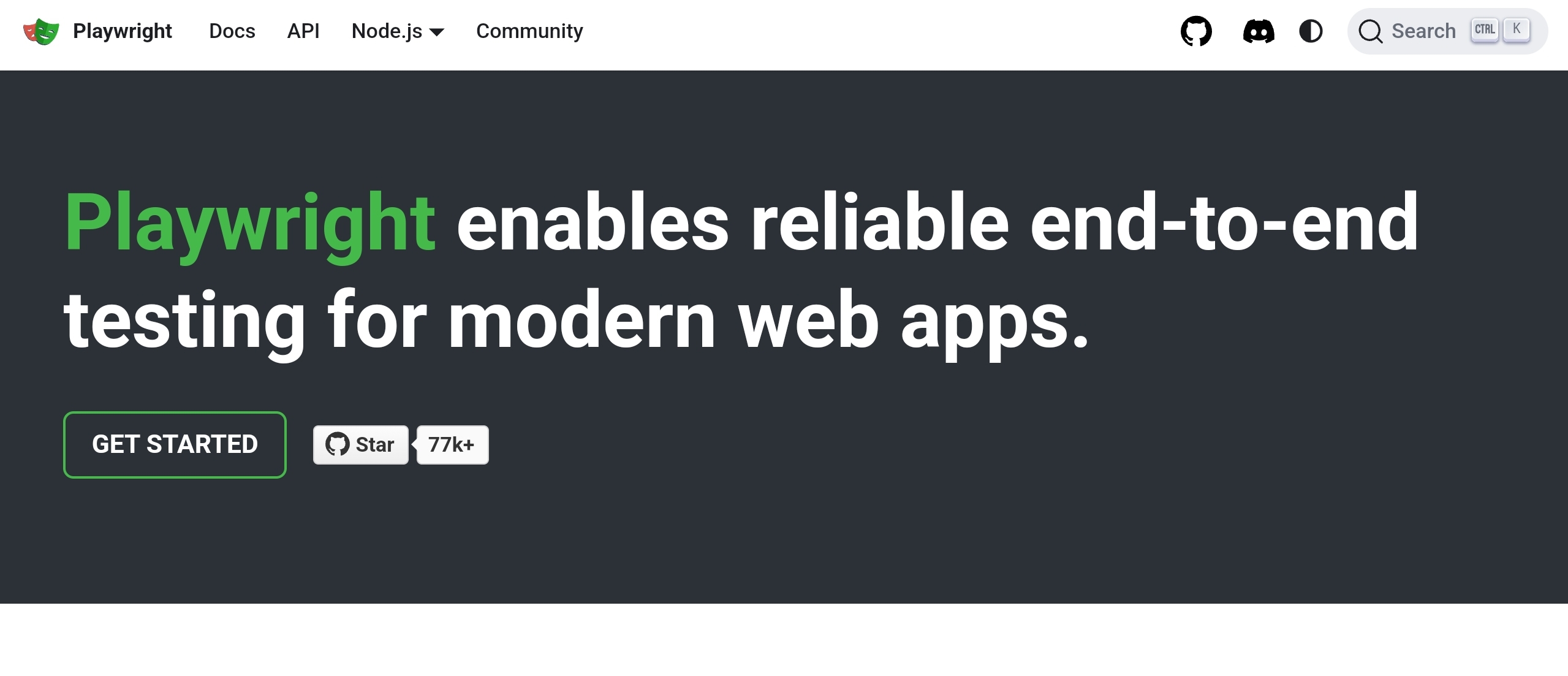
Playwright is Microsoft’s browser automation framework for testing web applications across Chromium, WebKit, and Firefox. It’s a powerful tool that supports multiple programming languages (JavaScript, Python, Java, C#), making it a great choice for diverse team expertise.
Key features:
- True cross-browser compatibility (including Safari via WebKit)
- Auto-waiting and web-first assertions reduce flakiness
- Parallel testing out of the box
- API testing and network interception
- Supports different programming languages beyond JavaScript
Unique features:
- Built-in test runner with rich test results reporting
- Mobile emulation for mobile application testing scenarios
- Video and trace recording for debugging user interactions
When to choose Playwright:
- You need better browser compatibility than Cypress
- Your team expertise includes Python or C# developers
- You want a direct Cypress replacement with more flexibility
- Your testing needs require multiple programming languages
Limitation: Still requires manual test case management and lacks AI-driven test creation. Not suitable for real devices or native desktop applications.
3. WebDriverIO
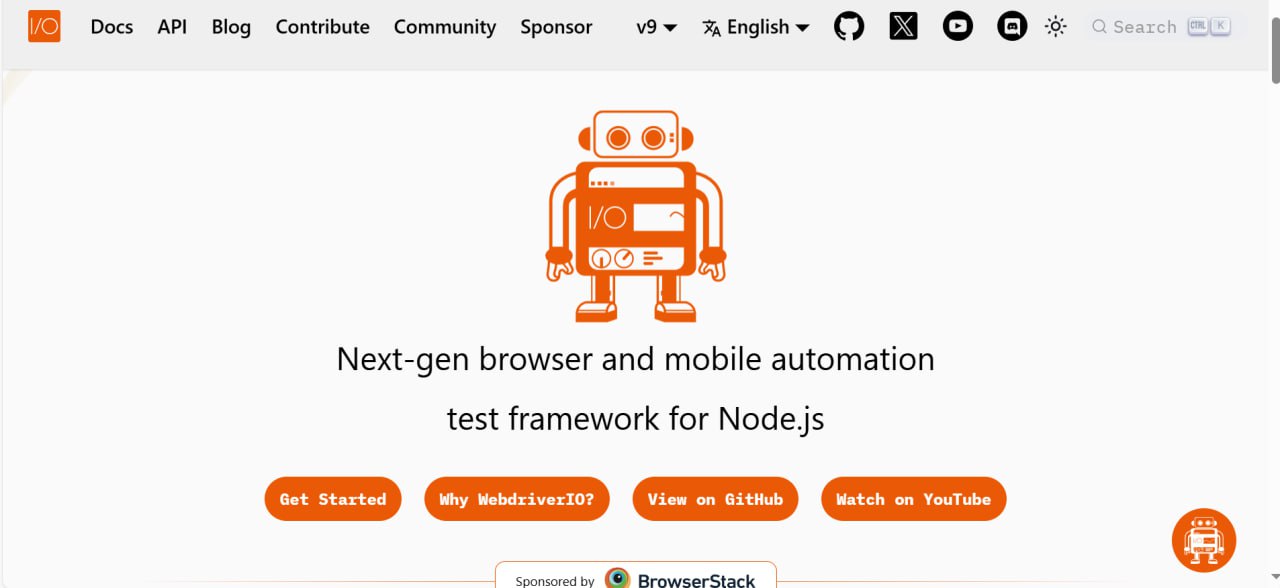
WebDriverIO is a Node.js-based browser automation framework compatible with Selenium WebDriver and Chrome DevTools Protocol. It’s a comprehensive testing tool that supports mobile application testing via Appium, making it more versatile than Cypress for diverse project requirements.
Key features:
- Cross-browser and mobile application testing on real devices
- Plugin ecosystem for Cucumber, Mocha, Jasmine
- Works with cloud services like BrowserStack and Sauce Labs
- b community support and documentation
- Handles web pages, mobile applications, and desktop applications
Additional features:
- Parallel testing across multiple browsers
- Visual regression testing capabilities
- Excellent integration capabilities with CI/CD pipelines
When to choose WebDriverIO:
- You need mobile application testing alongside web testing
- Your team expertise already includes Selenium knowledge
- Your testing requirements include real devices, not just emulators
- You need a testing tool that supports various alternatives for test execution
Limitation: Steeper learning curve than Cypress. More configuration overhead in the development process.
4. TestCafe
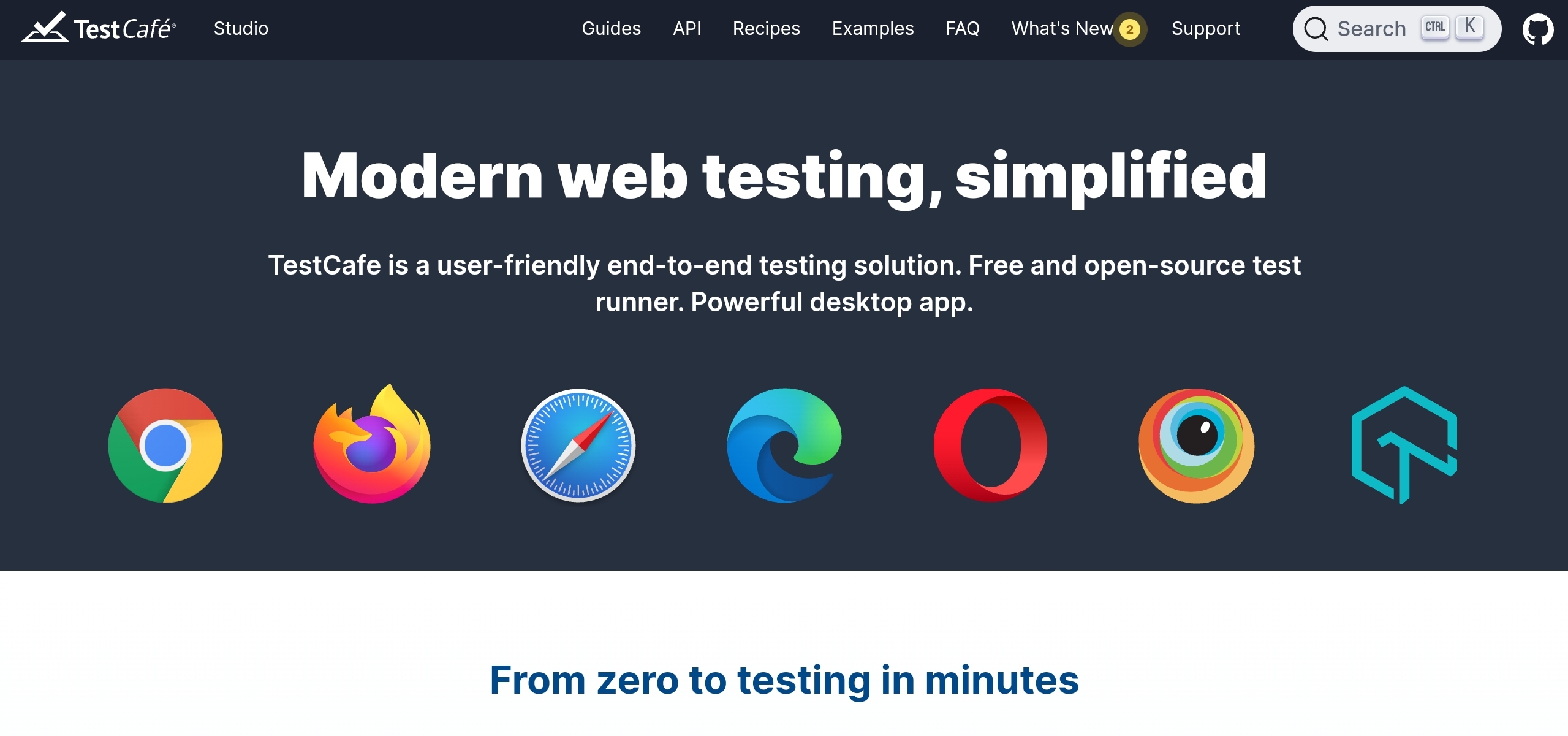
TestCafe is a pure JavaScript end-to-end browser automation framework that doesn’t depend on WebDriver. It installs zero browser plugins and runs on any modern browser, making it a popular choice for teams seeking simplicity.
Key features:
- No WebDriver dependencies – simpler setup
- Better browser compatibility than Cypress (Chrome, Safari, Firefox, Edge, mobile browsers)
- Automatic waiting and smart assertions
- Parallel testing across multiple browsers
- Tests web pages without complex configuration
Unique features:
- Concurrent test execution for faster test results
- Built-in screenshot and video recording
- Works with real devices through remote connections
When to choose TestCafe:
- You want Cypress-like simplicity with better browser support
- You need to test on actual mobile devices
- Your testing needs don’t require different programming languages
- You want to avoid WebDriver configuration complexity
Limitation: Smaller ecosystem than Cypress. Fewer plugins and integration capabilities. Not suitable for desktop applications or native mobile app testing.
5. Nightwatch.js
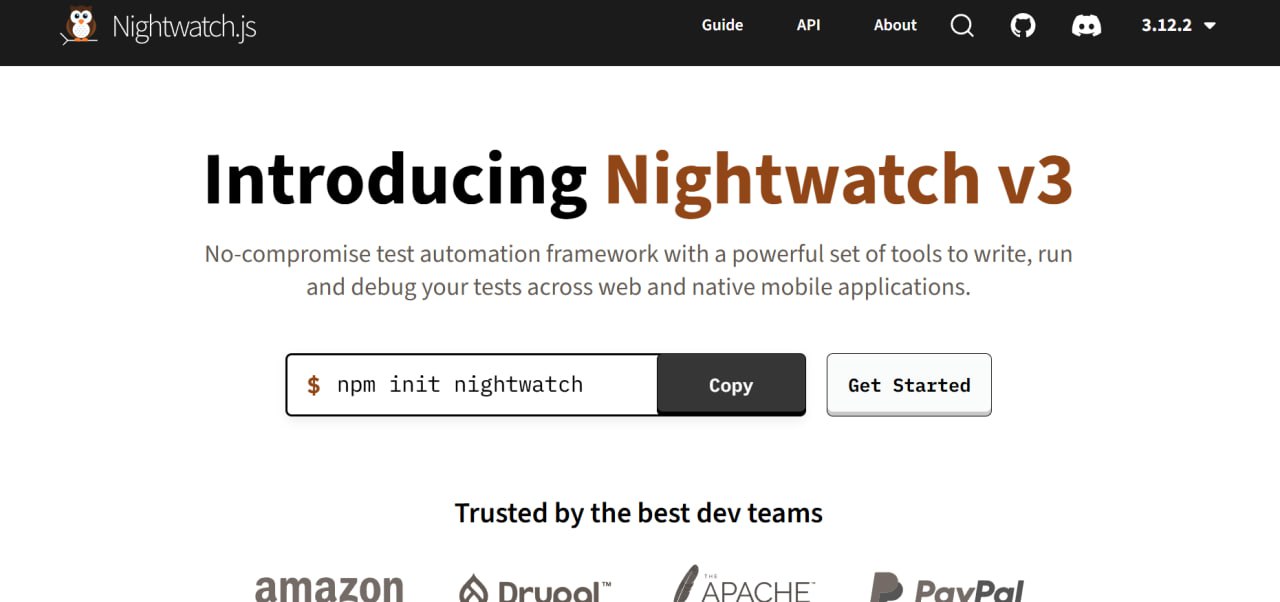
Nightwatch.js is an end-to-end browser automation framework built on Selenium WebDriver. It’s been around longer than Cypress and offers stable, production-grade software testing with built-in test runner and assertion library – a great choice for teams prioritizing reliability.
Key features:
- Selenium WebDriver integration for broad browser compatibility
- Built-in parallel testing
- Page Object Model support for maintainable test scripts
- Cloud service integration capabilities
Additional features:
- b community support from years of development
- Works well for comprehensive testing across browsers
- Handles complex user interactions reliably
When to choose Nightwatch.js:
- You need Selenium’s mature browser compatibility
- Your team expertise values stability over bleeding-edge features
- You’re testing legacy web pages that need older browser support
- Your specific requirements include enterprise-grade reliability
Limitation: Slower than modern automation tools. More verbose test scripts compared to newer frameworks.
6. CodeceptJS
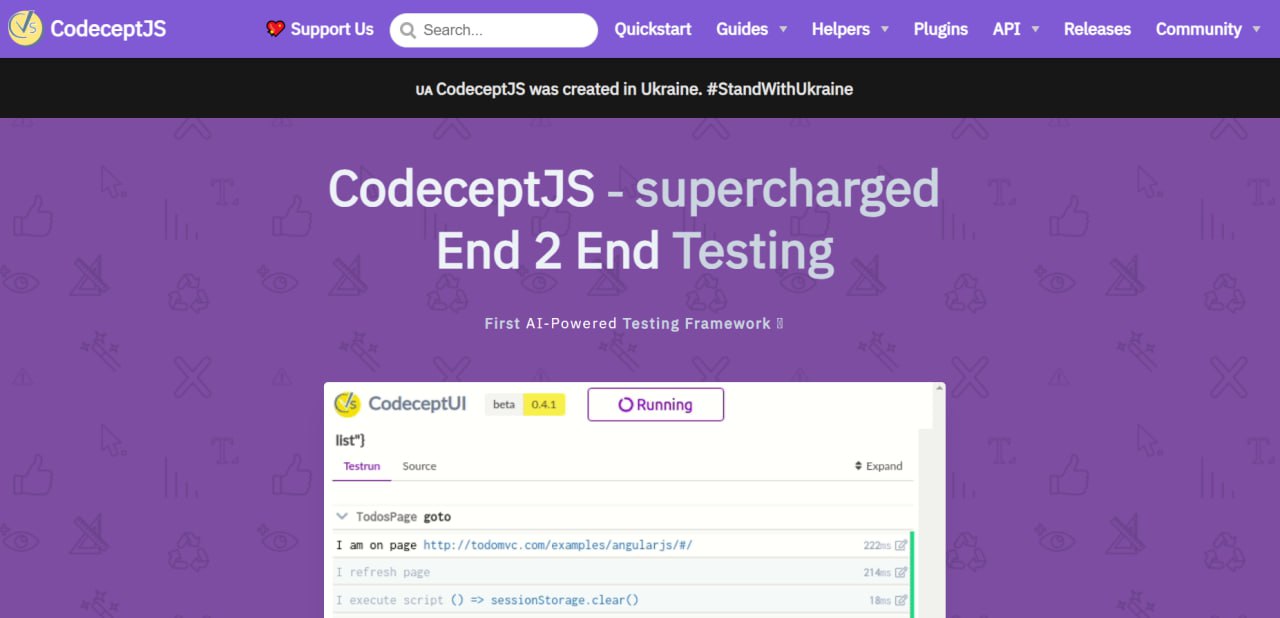
CodeceptJS is a high-level testing tool that abstracts WebDriver, Playwright, Puppeteer, and TestCafe behind a unified API. It uses Behavior-Driven Development (BDD) syntax, making test scripts readable for non-technical team members – an excellent choice for cross-functional collaboration.
Key features:
- Supports multiple browser automation backends (switch between Playwright, Puppeteer, WebDriver)
- BDD-style syntax improves the testing process with product teams
- Multi-session testing for scenarios requiring multiple user interactions
- AI-powered test healing detects and fixes broken locators
Unique features:
- Abstraction layer lets you swap automation tools without rewriting test scripts
- Parallel testing across different backends
- Web scraping capabilities for data-driven testing
- Flexible enough to adapt to specific needs
When to choose CodeceptJS:
- You want flexibility to swap browser automation engines without changing test creation
- Your team members use BDD and need readable test scenarios
- Your testing requirements include multi-user interactions (e.g., chat apps, collaborative tools)
- You need various alternatives for different project requirements
Limitation: Abstraction layer adds complexity to the development process. Debugging test results requires understanding the underlying driver.
7. Sorry Cypress
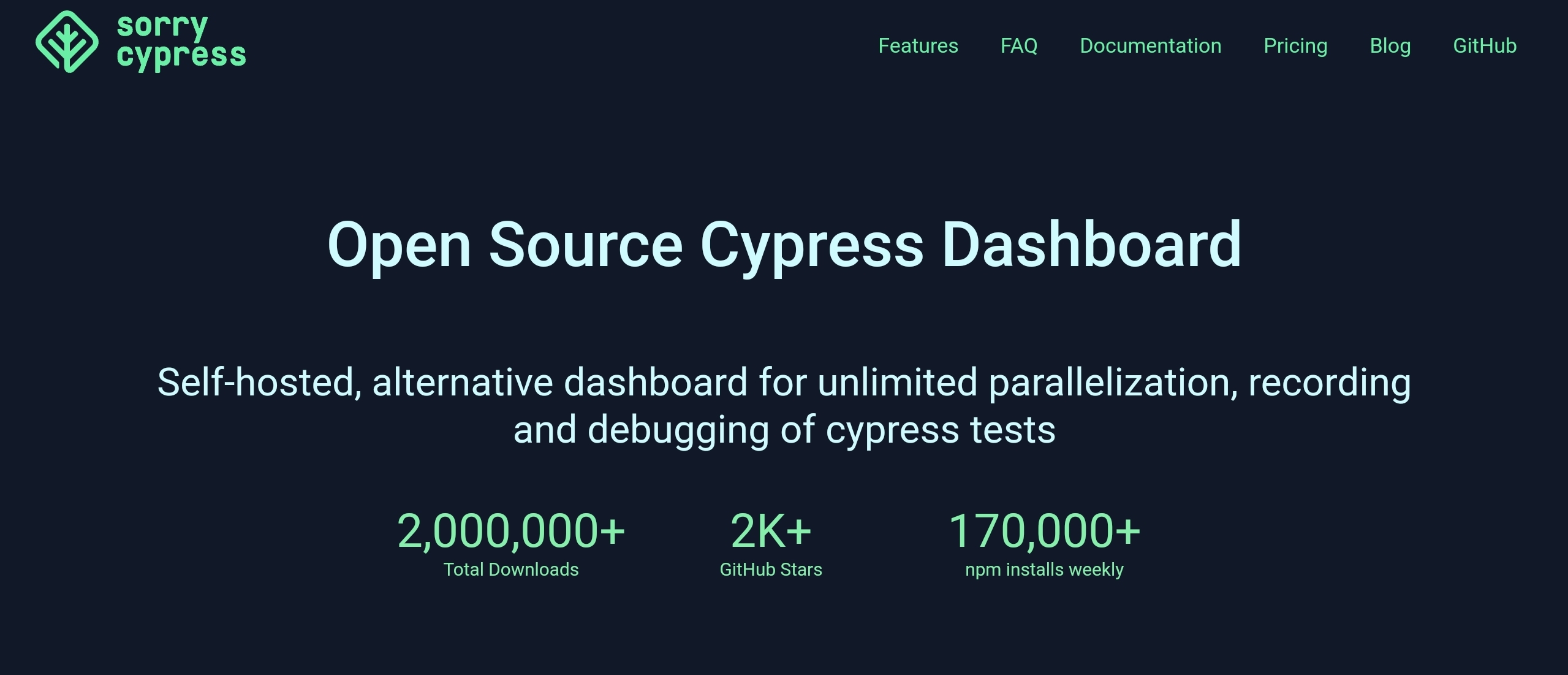
Sorry Cypress is an open-source alternative to Cypress Dashboard. It doesn’t replace Cypress itself – it replaces the paid parallelization and test results reporting service Cypress Cloud offers.
Key features:
- Self-hosted parallel testing
- Unlimited test recording and storage of test results
- Integrates with your existing Cypress test scripts
- Free and open-source testing tool
When to choose Sorry Cypress:
- You love Cypress but hate the Dashboard pricing
- You need data sovereignty (on-prem deployment)
- You want to scale parallel testing without subscription costs
- Your specific requirements include keeping test results in-house
Limitation: Requires infrastructure management. No AI features, flake detection, or advanced analytics. Still inherits Cypress’s limited browser support.
8. Currents.dev
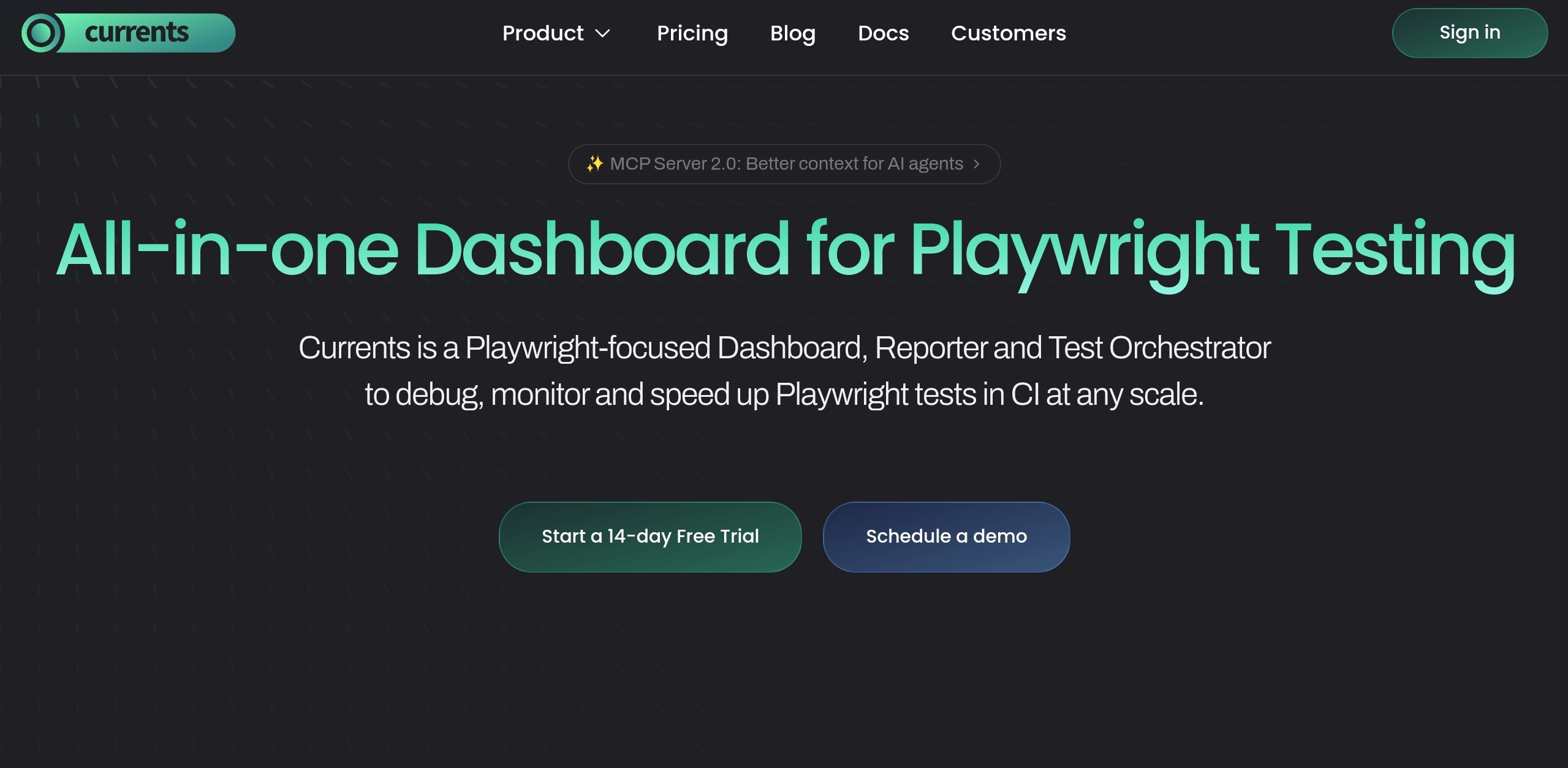
Currents.dev is a cloud-based alternative to Cypress Dashboard and Playwright Dashboard. It offers parallelization, test orchestration, and analytics for both frameworks – a powerful tool for teams already invested in these automation tools.
Key features:
- Cloud-based parallel testing for Cypress and Playwright
- Smart test orchestration reduces run times
- Integration capabilities with GitHub Actions, GitLab CI, Jenkins
- Analytics and flake detection for better test results
Additional features:
- Detailed test results dashboards
- Historical trending for the testing process
- Supports both browser automation frameworks as various alternatives
When to choose Currents.dev:
- You need a drop-in replacement for Cypress Dashboard
- You’re already using Cypress or Playwright and want better reporting of test results
- You want cloud-based parallel testing without infrastructure overhead
- Your testing needs focus on execution and analytics
Limitation: Focused on execution and reporting – no test case management or AI-driven test creation. Doesn’t solve Cypress’s limited browser support or expand testing capabilities beyond web pages.
Additional Testing Tools Worth Mentioning
Rainforest QA: A popular choice for teams needing comprehensive testing with human QA testers. It combines automated testing with crowd-sourced manual testing, making it a unique alternative when your testing requirements include real human validation of user interactions. Great for teams without deep team expertise in automation but needing reliable test results.
Selenium: The original browser automation tool that established software testing standards. While older, it remains an excellent choice for teams with existing Selenium expertise and specific requirements for legacy browser compatibility. Supports different programming languages and has the largest community support in the testing tool ecosystem.
Testomat.io vs Cypress
| Feature | Cypress | Testomat.io |
| Test execution | Fast, browser-based automation | Orchestrates any automation tool (Cypress, Playwright, WebDriverIO, etc.) |
| Browser compatibility | Limited browser support (Chromium-based, Firefox/Edge experimental) | Any browser, any platform via orchestration |
| Programming languages | JavaScript/TypeScript only | Framework-agnostic (works with different programming languages) |
| Test case management | None (requires external testing tool) | Built-in AI-powered test creation and management |
| Manual testing | Not supported | Unified manual and automated testing process |
| AI features | None | AI test generation from requirements, flake detection, test optimization |
| Collaboration | Developer-focused only | Connects all team members – BA, Dev, QA, PM, Product, and non-tech stakeholders |
| Scalability | Degrades at scale, requires paid Dashboard for parallel testing | Handles 100K+ tests per project with enterprise-grade stability |
| Integration capabilities | Limited (requires plugins) | Native Jira, GitHub, Slack, CI/CD connections out of the box |
| Analytics | Basic (or paid Dashboard) | Real-time dashboards, trend analytics, smart test results reporting built-in |
| Mobile testing | Not supported | Mobile application testing via orchestration |
| Platform support | Web pages only | Web pages, mobile applications, desktop applications, real devices |
| Flake detection | Manual identification | Automated flake detection with AI |
When Testomat.io is the better fit:
- You’re scaling beyond web-only testing. Cypress locks you into limited browser support and JavaScript. Testomat.io orchestrates test scripts across any framework, programming languages, or platform – matching your specific requirements.
- Your team includes non-technical stakeholders. Product managers, BAs, and executives need visibility into the testing process. Testomat.io gives all team members a shared workspace – Cypress doesn’t.
- You need AI to reduce manual overhead. Testomat.io’s AI agents handle test creation from requirements, detect flaky tests, and optimize comprehensive testing coverage automatically. Cypress requires manual test scripts for everything.
- You’re managing both manual and automated testing. QA teams don’t just run automation – they perform exploratory testing, regression checks, and manual validation. Testomat.io unifies both workflows into one testing tool. Cypress only handles browser automation.
- Your testing needs span multiple platforms. From web pages to mobile applications to desktop applications, Testomat.io adapts to your project requirements. Cypress can’t handle mobile application testing or real devices.
- Your team expertise includes different programming languages. Testomat.io works with any automation tool your developers already know. No need to retrain JavaScript developers or force Python teams to switch languages.
When they work together:
Keep Cypress for fast local test execution and developer-focused debugging of web pages. Use Testomat.io to orchestrate those Cypress test scripts at scale, manage test creation, generate new tests with AI, and give your entire team visibility into test results. One command syncs results from Cypress into Testomat.io – no custom scripts needed. This combination is a powerful tool for teams transitioning from pure automation to comprehensive testing.
Final Recommendation
Stick with Cypress if your team is small, your product is web-only, you’re testing mostly in Chrome browser, and your team expertise is exclusively JavaScript. It’s fast, reliable, and developer-friendly for that specific use case.
Switch to Testomat.io when:
- Your test suite exceeds 1K tests and maintenance becomes painful
- You need better browser compatibility or mobile application testing
- Your team members include non-technical stakeholders who need visibility into the testing process
- You’re tired of managing test cases in spreadsheets or scattered files
- You want AI to accelerate test creation and reduce manual overhead
- You’re scaling to enterprise-level software testing and need a unified QA environment
- Your testing requirements include both manual and automated workflows
- You need flake detection to improve test results reliability
- Your specific needs require testing desktop applications or real devices
- You need comprehensive testing across web pages, mobile applications, and multiple platforms
Why Testomat.io wins for AI-enhanced, enterprise-ready software testing: It’s the only testing tool that combines AI-powered test creation, cross-framework orchestration, and unified manual/automated testing in one workspace. You get smart dashboards tracking test results, trend analytics, and flake detection built-in – not as add-ons that complicate your development process.
Over 500 companies trust Testomat.io to connect QA, Dev, PM, BA, and Product into a single loop that matches their specific requirements. We ship updates every two weeks, and our AI features deliver real value to your testing process – not vaporware.
Unlike other automation tools that force you to choose between limited browser support, specific programming languages, or narrow testing capabilities, Testomat.io adapts to your testing needs. It’s an excellent choice whether you’re doing unit testing, integration testing, comprehensive testing across platforms, or managing complex user interactions.
The integration capabilities work with any CI/CD pipeline, the parallel testing handles massive test suites without degradation, and the community support helps your team members onboard quickly. Additional features ship regularly based on real user feedback, making it a great choice for growing teams with evolving project requirements.
Ready to see how Testomat.io handles your testing challenges? Start for free or schedule a demo to watch AI generate test cases from your Jira backlog in real time. See how one testing tool can replace various alternatives and unify your entire testing process. No credit card required.
